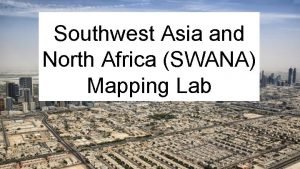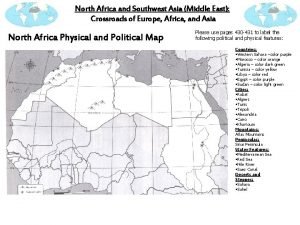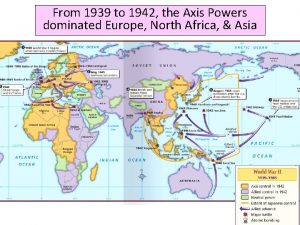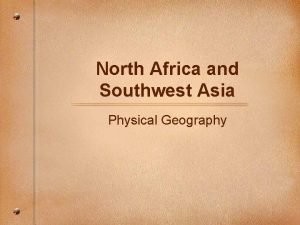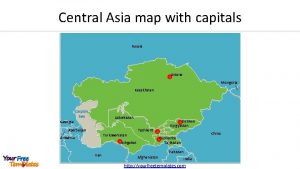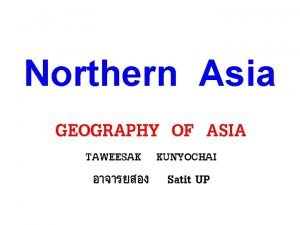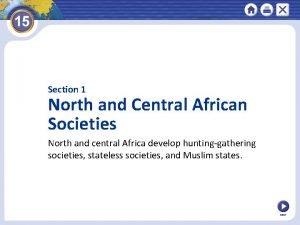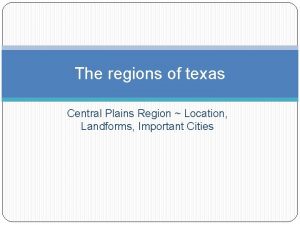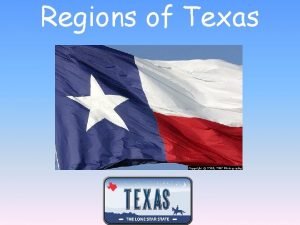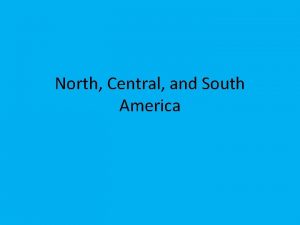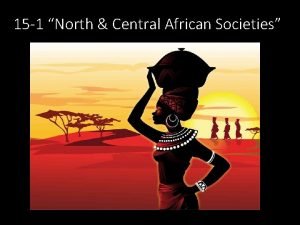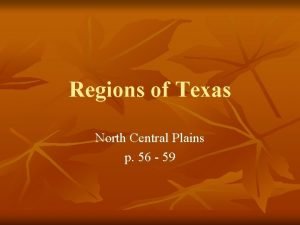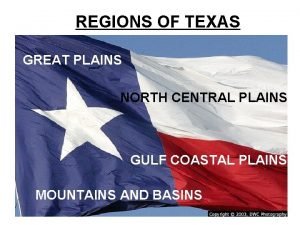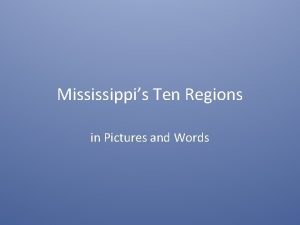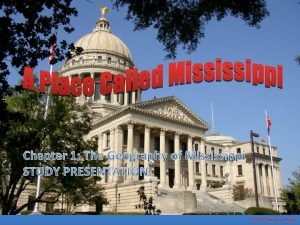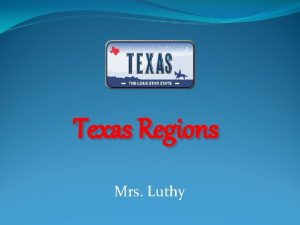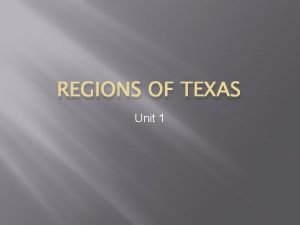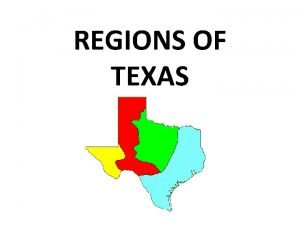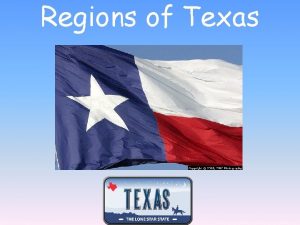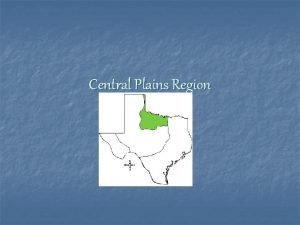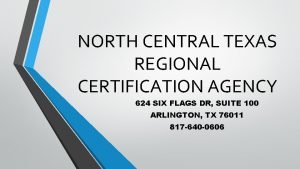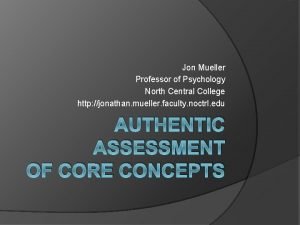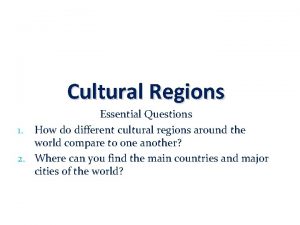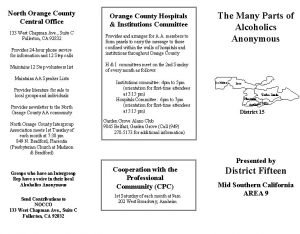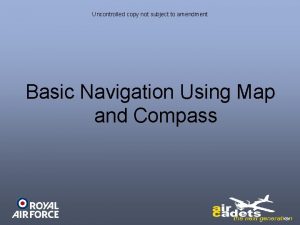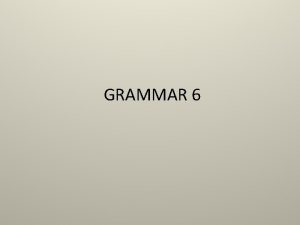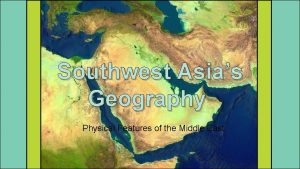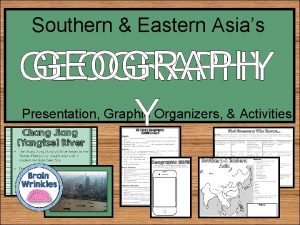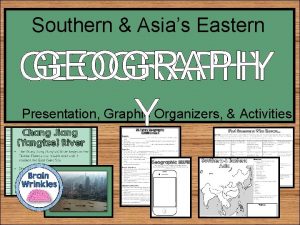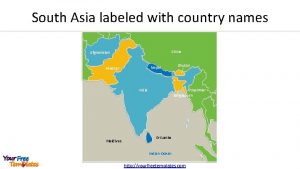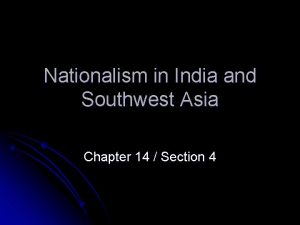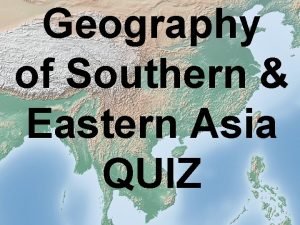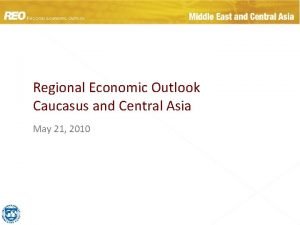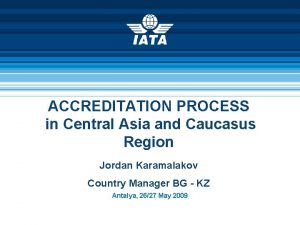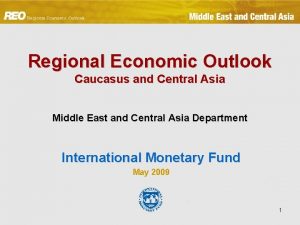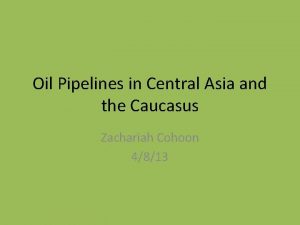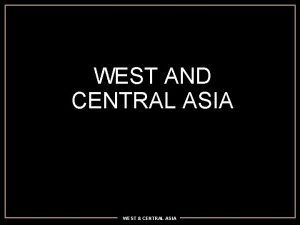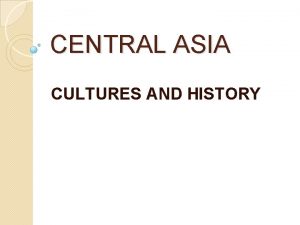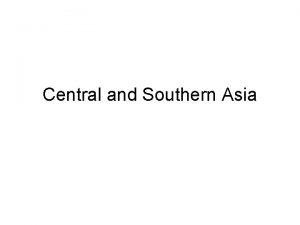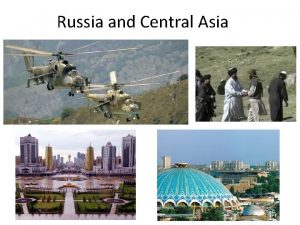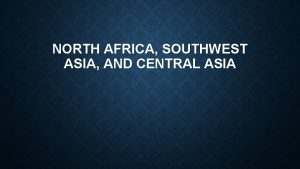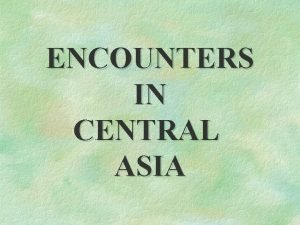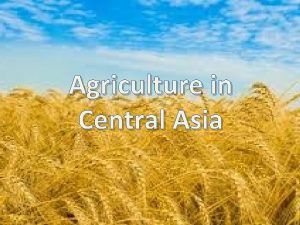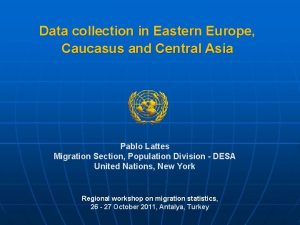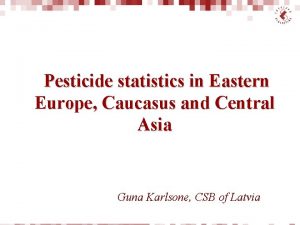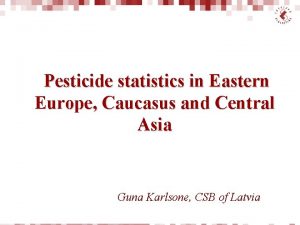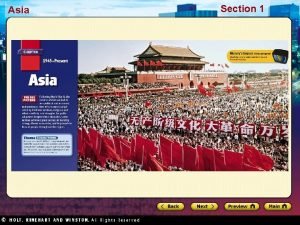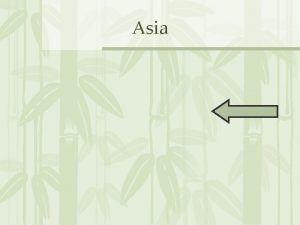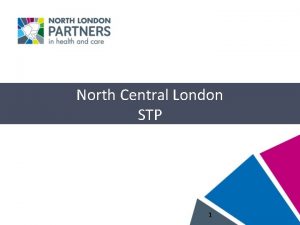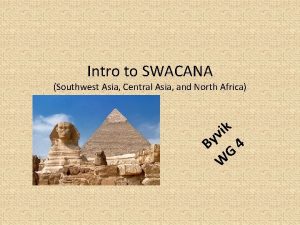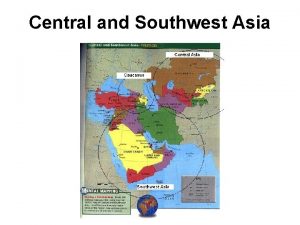North Caucasus and Central Asia NORTH CAUCASUS www










































- Slides: 42

North Caucasus and Central Asia

NORTH CAUCASUS www. rjgeib. com/. . . /chechnya. htm l

AGENDA 1. Introduction 2. Chechen conflict, timeline 3. Russian position in this conflict 4. Reasons for the desaster 5. Additionally other country profiles 6. External actors 7. Difficulties and possible solutions

http: //www. lib. utexas. edu/maps/commonwealth/russia_auton 96. jp

www. hrvc. net/htmls/map. htm


Timeline: Chechnya Chronics: until 1858: decades of resistance against russian conquerors 1934: Chechen-Ingush Autonomous Soviet Solialist Republic 1944: Stalins retribution for chechen colloboration with Nazi-regime: deportation 1957: Khrushev restores the Republic of the year 1934

Chechen war : chronics ● ● ● 1991: Declaration of independency (Dudajew), only Afghanistan recognizes the state „Ishkeria“ 1994 -1996: first war result: autonomy, but no independence 1997 -1999: Maskhadow (chechen leader )could not bring the country under control 1999: chechen-dagestanian border: attempt to create an islamic state, terror attacs in Russia 1999 – 2000: second war http: //img. stern. de/_content/53/74/537449/Maschadow 500_500. jpg http: //www. dw-world. de/image/0, , 661054_1, 00. jpg

chronics officials ● ● ● Since 2000: Moskow loyal Kadyrow years, Putin declares direct rule from Moskow 2003: referendum vote of the new constitution (C. as a part of RF); Kadyrov elected president 2004: Kadyrov killed, Alkhanov is president 2005: new parliament 2006: son of Kadyrow becomes prime minister chechen „leaders“ ● ● 2005 Maskhadov killed 2006: his successor Saydullayev killed July 2006: warlord Basayev killed Dokka Umarov has to unite the different gangs (b-list)

Shamil Basayev Profile -born 1965 -briefly studied in Moskow land management -became later computer salesman career as a chechen fighter: -1. 1995: hospital siege; Budyonovsk, southern Russia, 100 people killed -10. 2002: Moskow theatre siege, 129 hostages die -8. 2004: suicide bombers kill 10 people outside metro in Moskow -9. 2004: gunmen seize school in Beslan, 331 died -10. 2005: attac in Nalchik, Russia; scores killed consequenses of his death: power has to be structured in a new way, this might provoke new conflicts within clans which desire more control or power in Chechnya by claiming important positions for „their“ people all information and pictures: www. bbc. com 10. 7. 06


Chechnya

INGUSHETIA

Dagestan

characteristics Complex ethnitical construction structural problems „clan-society“ many beneficiaries of the conflict distabilisation from russia radicalisation of the fronts international war on terror hinders IO to express open their opinion on russian war in chechnya


FAU Erlangen-Nürnberg Institute for Political Science PS: Failed and Fragile States Presentation by Emma Hauer 28. 062006 State Failure in Central Asia Kazakhstan, Kyrgyzstan, Tajikistan, Turkmenistan, Uzbekistan

Where is Central Asia?


1. • • 2. • • • General economical decline after independence: discontinuation of financial subsidies from Moscow disruptive privatisation; exclusion from the Central rouble zone. Asian states? Structural Problems in the massive out-migration of Russians and other Russian-speakers vacuum in key positions in administration and economy industrial development backward; primarily supplier of raw materials Difficult process of state- and nation-building: embryonic states; never existed as modern national-states before old Soviet nomenclature still powerful political transformation? multiethnic states (forced and voluntary immigration by dozens of other nationalities) disputes over borders and land (administrative borders do not follow ethnic and linguistic lines) weak sense of national identity

Developments after independence 1. Socio-economic situation: • increasing unemployment and poverty of the major part of the population • worsening living standards: decline of infrastructure, health and educational systems precarious situation especially for youth: higher rates of illiteracy, drug use, unemployment etc. borderland Afghanistan became a factor of instability: rapidly expanding gun and drug trade; refugees 2. Political situation: • development to non-democratic, repressive and authoritarian political systems • police forces much more powerful than militaries (but: corrupt, criminal) • declining public support for the governments • worsening of ethnic and state relations • in spite of state repression and persecution of Islamic groups, spread of underground Islamist activism

Various Types of State How fulfil the Central Asian States the core functions of Security, Welfare, Legitimacy and Law state?

1) Kazakhstan

2) Uzbekistan

3) Kyrgyzstan

4) Turkmenistan

5) Tajikistan


Characteristics & Future Prospects for the Region ● ● threat of Islamic fundamentalism not imminent in Central Asian states but: political repression of religious groups could lead to a radicalisation development to non-democratic and authoritarian political systems could become a major risk factor for instability continuation of the war in Afghanistan will lead to a worsening of the socio-economic and political situation in Central Asian states, particularly in Tajikistan, Turkmenistan and Uzbekistan

Overview 1. 2. 3. 4. 5. 6. 7. 8. Burka Band Country Profile State- and nationbuilding Democratization State-/violence Socio-/oeconomic situation Summary Characteristics

Afghanistan The Burka Band

. . . my mother wears blue jeans now, and i am so surprised; the things are changing faster, i don´t know if it´s right. . .

Übersicht Afghanistan

Afghanistan Country Profile • • • Population: 31. 056. 997 (July 2006 est. ) Capital: Kabul Religion: 99% Muslim Literacy: 36% Life expectancy: 43. 34 years • Head of State/ President: Hamid KARZAI

Analysis state- and nationbuilding 19 th century: 1923: 1978 -1989: 1989 -2001: 2001 -2006: Colonialism Monarchy Afghanistan under sovjet rule Afghanistan und the rule of Taliban Islamic Republic of Afghanistan

Democratization • Bonn agreement • Government consists of: – Warlords/Mujaheddin – „west oriented“ politicians

Democratization? Attention: Is democratization possible? Obstacles: • lack of human rights and security • destroyed infrastructure • no economy • lack of any political system Different interests by different forces!

Democratization? • Warlords/ Mujaheddin: Territory soverignity/independent from the government Drug/gun trafficking/ partly Taliban • Politicians: realization of the interests of U. S. / U. N. Low acceptance by the citizens

State-/ Violence

Socio/-oeconomic situation • Agricultur/ mostly Opium cultivaton: 87% of the world supply • Weak economy: small-scale production of textiles, soap. . . • Low average level of education


Characteristics ● ● ● Afghanistan is a failed state Was the ad hoc intervention of the U. S. a success? Are their similarities to Iraq? Different Interests: U. S. /NATO: military base in middle asia Warlords: don´t want to share their power Borderlands: profits from gun/drug trafficking strengthening the power of islamic fundamentalist
 Physical map of swana
Physical map of swana Swana
Swana Is israel in africa or asia
Is israel in africa or asia Who dominated europe, north africa and asia from 1939-1942?
Who dominated europe, north africa and asia from 1939-1942? Asia africa north and south america
Asia africa north and south america Kums definition geography
Kums definition geography Southwest asia and north africa physical map
Southwest asia and north africa physical map North africa and southwest asia mountains
North africa and southwest asia mountains Central asia map with capitals
Central asia map with capitals Conqueror of central asia
Conqueror of central asia Northern asia countries
Northern asia countries North and central african societies
North and central african societies Central plains landforms
Central plains landforms How many regions in texas
How many regions in texas North, central and south america
North, central and south america North and central african societies
North and central african societies Integrated care system north east
Integrated care system north east Chapter 14 north and south
Chapter 14 north and south North central plains texas map
North central plains texas map Major cities in great plains of texas
Major cities in great plains of texas Tennessee tombigbee
Tennessee tombigbee Which city is located in the north central hills region?
Which city is located in the north central hills region? North central plains landmarks
North central plains landmarks North central plains vegetation
North central plains vegetation Gulf coastal plains climate
Gulf coastal plains climate How many regions in texas
How many regions in texas North central state college jobs
North central state college jobs Subregions of north central plains
Subregions of north central plains Nctrca
Nctrca North central college psychology
North central college psychology North central america
North central america North orange county aa
North orange county aa North central district health department ct
North central district health department ct Central washington medical center
Central washington medical center True north vs magnetic north
True north vs magnetic north The north pole ____ a latitude of 90 degrees north
The north pole ____ a latitude of 90 degrees north Physical features in the middle east
Physical features in the middle east Sw asia geography cloze notes 1
Sw asia geography cloze notes 1 Label the following
Label the following Wallace's line
Wallace's line South asia map and capitals
South asia map and capitals Nationalism in india and southwest asia
Nationalism in india and southwest asia South asia physical features
South asia physical features
